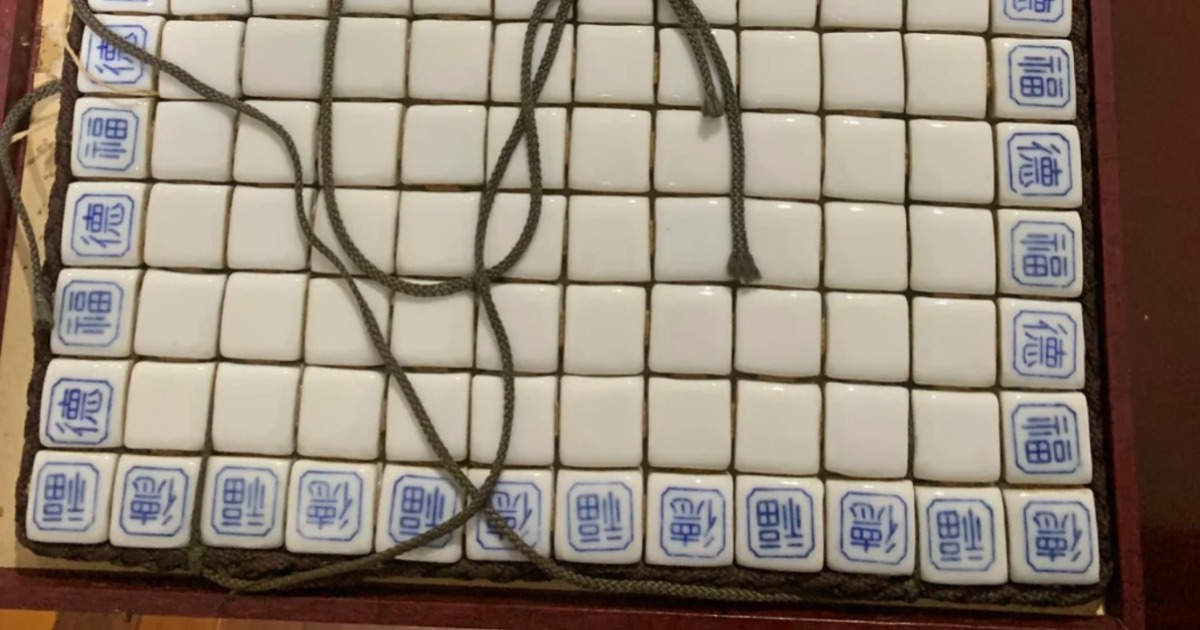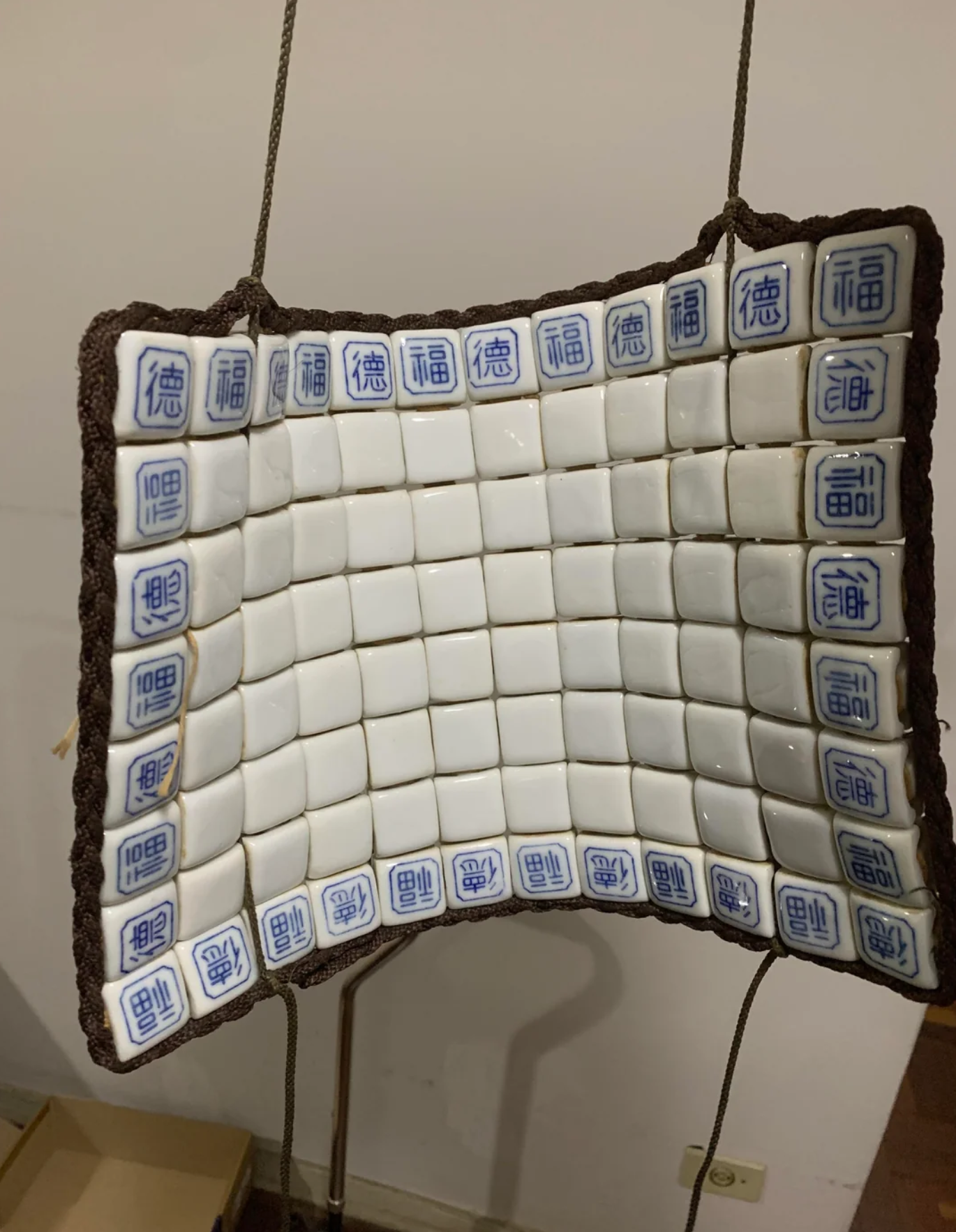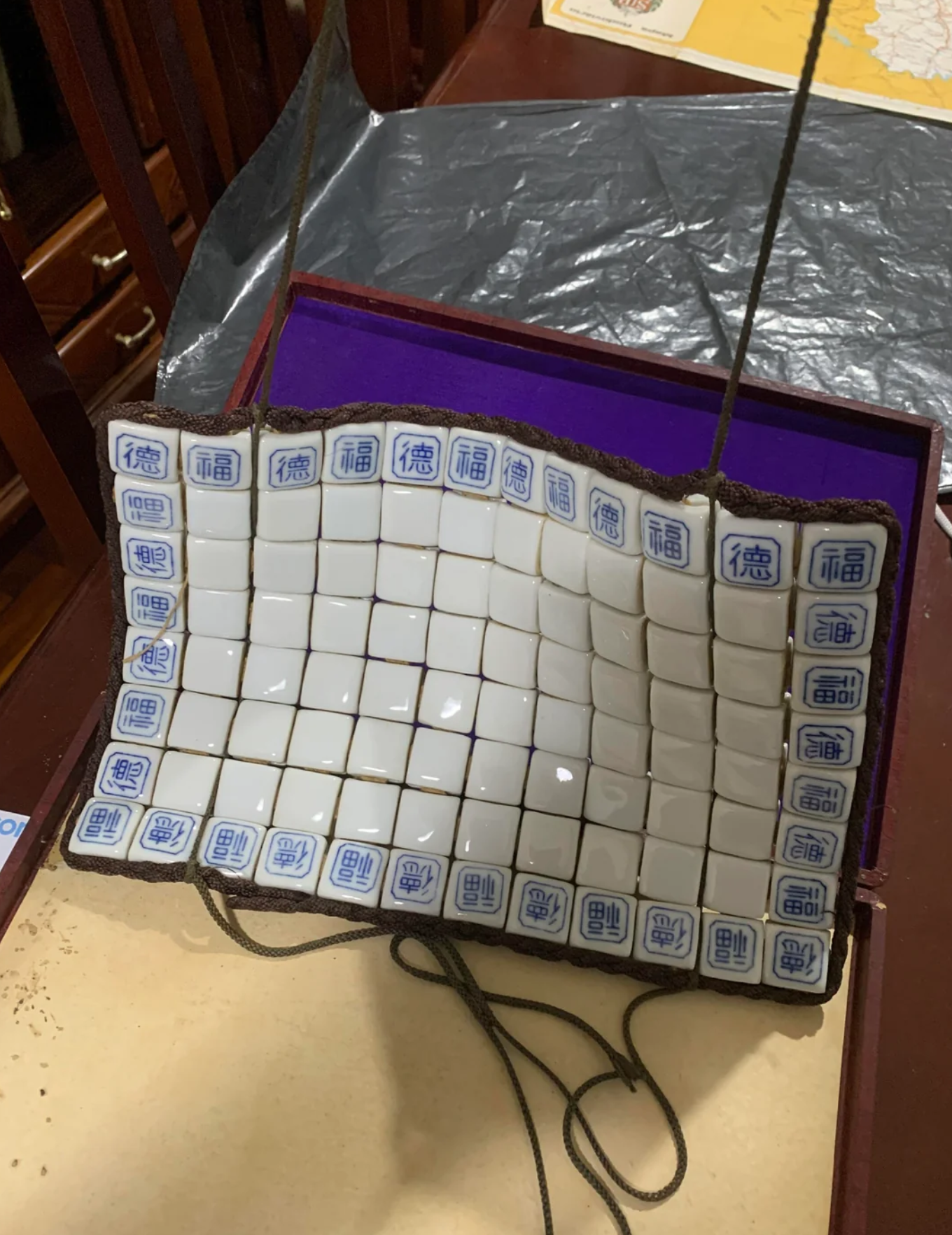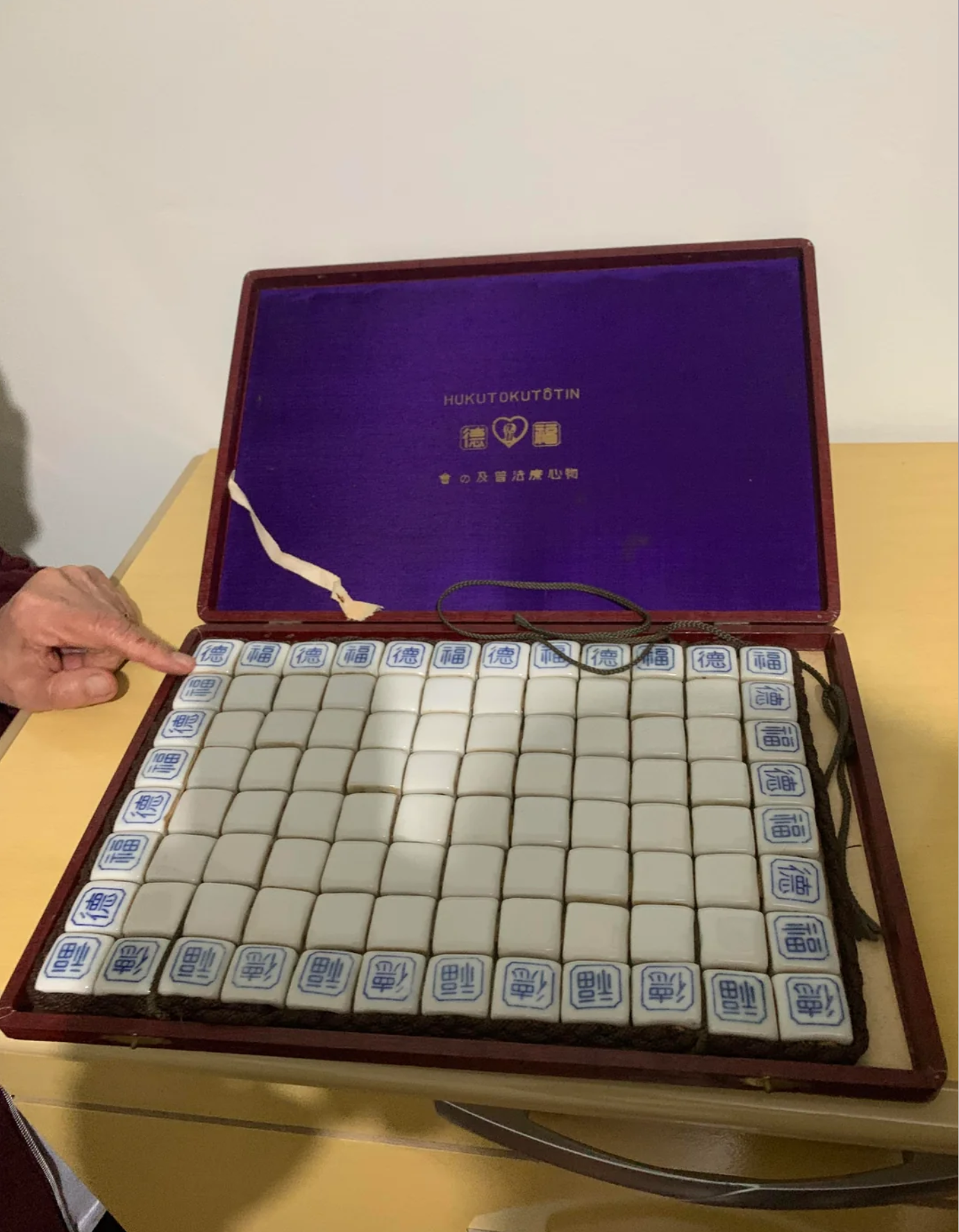What Was This Even For?

Source: Reddit
The ceramic pillow, or Tōchin (陶枕), is an old-time Japanese health-related object consisting of a series of connected glazed ceramic tiles. Though it looks saggy and disorganized, people use it as a wellness device to support the head, neck, or back, often wrapping it around a thicker pillow.
What is the Ceramic Pillow, Tōchin?
There are smooth ceramic tiles that are glazed connected by a flexible stitch. The ceramic section is drawn out by kanji found along the ceramic tiles’ walled edges that say:
- 福 (fuku) – fortune
- 德 (toku) – virtue
- 禮 (rei) – courtesy
- 豐 (yutaka) – abundance
These kanji suggest a cultural connection between physical well-being, and spiritual or moral well-being. The Tōchin acts as a supportive structure, promoting good posture and suitable resting position for sleep.

Origin of the Ceramic Pillow and Purpose
The box the pillow came in has an older letter style of writing Japanese from right to left in a horizontal manner that has the romanized word HUKUTOKUTÔTIN –
物心療法普及の會
Association for the Promotion of Psycho-Physiological Therapy.
An organization promoting treatment for both mental and physical healing designated this, tying it to the history of the traditional Japanese health system that promotes balance between body and spirit.
Why Ceramics?
Ceramic tiles would provide structure: maintaining constant shape and the ability to apply pressure.
- Ceramics are cool: it still is cool to the touch.
- Structure for support: would be appropriate for acupressure, and/or spinal support.
- The combination leads structure to good posture and directed as well for meditative solid body rest.

History of the Tōchin
Some would say ceramic pillows like the Tōchin have a place in the history of East China and Japan. The pillow, thought to assist circulation, spinal support and even effects of dreaming. In fact, makers didn’t design the pillow as a relaxation instrument like today’s pillows; they constructed it for intentional, steady rest and repose.
Each pillow symbolized ultimate use and purpose. The overall kanji and repeated back and forth along the edges were ornamental, but it had varied meanings and purposes with spiritual healing utility.
Contemporary Relevance
Some have retained the use of ceramic, or hard-surface as a support headings in this manner:
- Meditation
- Neck and back support
- Seated posture correction
The firmness of the structure and the upgrades of freshness design have provided for collectors and/or practitioners that study traditional approaches toward wellness.

Conclusion
The ceramic pillow Tōchin provides a connection to artisanship, representing symbolic intent, and illustrates health logic. It has a relevant awareness of material culture demonstrated in its distinctive design and therapeutic connections. The ceramic pillow can represent a wellness tool, and cultural artifact.